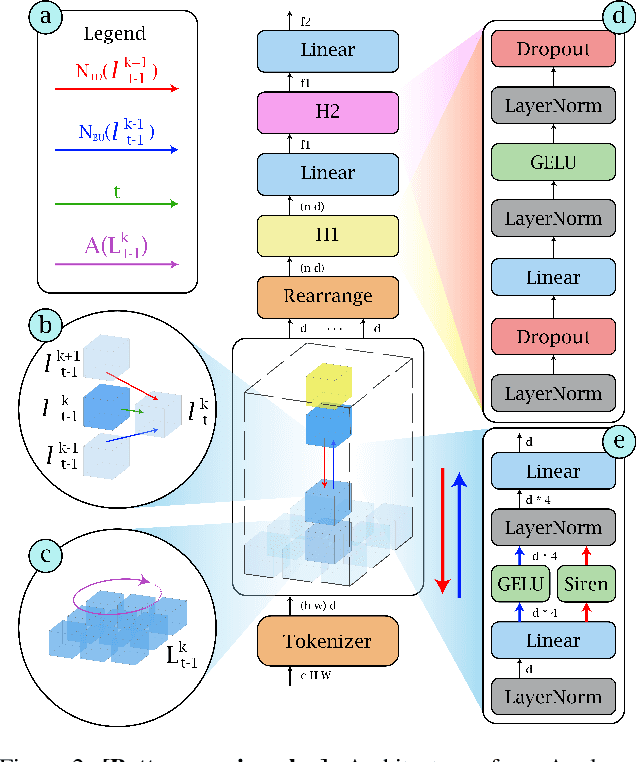Zeno Sambugaro
Ahan
Lagrangian Hashing for Compressed Neural Field Representations
Sep 09, 2024



Abstract:We present Lagrangian Hashing, a representation for neural fields combining the characteristics of fast training NeRF methods that rely on Eulerian grids (i.e.~InstantNGP), with those that employ points equipped with features as a way to represent information (e.g. 3D Gaussian Splatting or PointNeRF). We achieve this by incorporating a point-based representation into the high-resolution layers of the hierarchical hash tables of an InstantNGP representation. As our points are equipped with a field of influence, our representation can be interpreted as a mixture of Gaussians stored within the hash table. We propose a loss that encourages the movement of our Gaussians towards regions that require more representation budget to be sufficiently well represented. Our main finding is that our representation allows the reconstruction of signals using a more compact representation without compromising quality.
Interpretable part-whole hierarchies and conceptual-semantic relationships in neural networks
Mar 07, 2022



Abstract:Deep neural networks achieve outstanding results in a large variety of tasks, often outperforming human experts. However, a known limitation of current neural architectures is the poor accessibility to understand and interpret the network response to a given input. This is directly related to the huge number of variables and the associated non-linearities of neural models, which are often used as black boxes. When it comes to critical applications as autonomous driving, security and safety, medicine and health, the lack of interpretability of the network behavior tends to induce skepticism and limited trustworthiness, despite the accurate performance of such systems in the given task. Furthermore, a single metric, such as the classification accuracy, provides a non-exhaustive evaluation of most real-world scenarios. In this paper, we want to make a step forward towards interpretability in neural networks, providing new tools to interpret their behavior. We present Agglomerator, a framework capable of providing a representation of part-whole hierarchies from visual cues and organizing the input distribution matching the conceptual-semantic hierarchical structure between classes. We evaluate our method on common datasets, such as SmallNORB, MNIST, FashionMNIST, CIFAR-10, and CIFAR-100, providing a more interpretable model than other state-of-the-art approaches.
 Add to Chrome
Add to Chrome Add to Firefox
Add to Firefox Add to Edge
Add to Edge